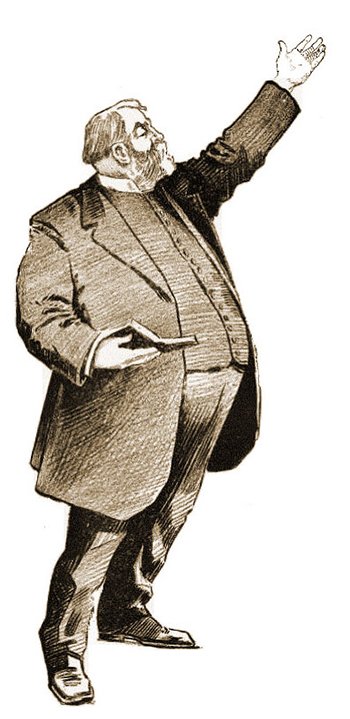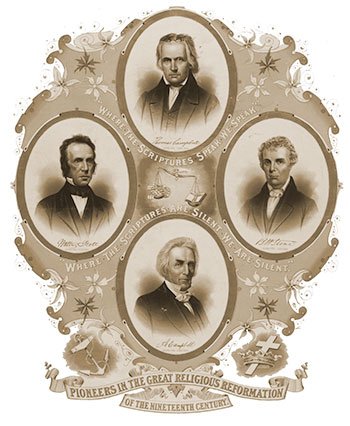1745 Revival Among the Delaware Indians

David Brainerd
The 1745 revival among the Delaware Indians marked a profound shift in the religious landscape of North America. As part of the Great Awakening, a widespread religious fervour that swept through the American colonies in the 18th century, this revival among the Delaware Indians stands out for its intensity and lasting impact on the Delaware people and the development of Christianity among Native Americans.
Religion Among the Delaware Indians Before 1745
Before the arrival of Christian missionaries, the Delaware Indians held a worldview deeply rooted in animism. They believed that spiritual forces resided in all aspects of the natural world, from animals and plants to inanimate objects and locations. This animistic perspective shaped their understanding of the cosmos and their place within it1.
Their religious practices included ceremonies and rituals aimed at connecting with these spiritual forces and ensuring harmony with the natural world. These ceremonies often involved elaborate dances, songs, and the use of sacred objects3.
However, by the mid-18th century, the Delaware faced numerous challenges. Their social lives were marked by internal conflicts, including marital strife, dishonesty, and injustice1. Alcohol abuse was rampant, contributing to social unrest and further exacerbating existing problems2. In this context of social and spiritual unrest, a new religious movement emerged.
In May of 1745, an Indian prophet, adorned in a coat of bear skins, appeared among the Delaware. This prophet sought to revitalize what he perceived as the ancient religion of the Indians, emphasizing a return to traditional values and practices4.
Adding to this complex religious landscape were the efforts of Moravian missionaries who had been working among the Delaware Indians since the early 18th century. These missionaries, with their focus on communal living and personal piety, had already begun to influence the religious beliefs and practices of some Delaware communities4.
Early Missionary Efforts
The Moravian missionaries played a significant role in introducing Christianity to the Delaware Indians. Johan Campanius Holm, a Swedish Moravian missionary, was a pioneer in this effort. He was the first Protestant minister to translate a catechism into an Indian language, demonstrating a deep commitment to sharing the Christian faith with Native Americans5.
Another prominent Moravian missionary was David Zeisberger, who arrived in America in 1738 and dedicated his life to working with the Delaware. Zeisberger’s efforts contributed significantly to the growing number of Christian converts among the Delaware by the 1770s6.
The Spark of Revival
Amidst this backdrop of social unrest, religious revivalism, and early missionary efforts, a young Presbyterian missionary named David Brainerd arrived among the Delaware Indians on April 1, 17432. Brainerd, known for his intense piety and unwavering commitment to prayer and fasting, embarked on a mission to bring Christianity to the Delaware people2.
Brainerd’s message of salvation and redemption resonated with many Delaware Indians who were seeking spiritual solace and a way to address the challenges facing their communities. His passionate preaching and personal dedication to his mission inspired a growing number of converts2.
The pivotal moment in this spiritual awakening occurred on August 8, 1745, at Crosswicks, New Jersey. Brainerd, preaching to a congregation of Delaware Indians and white settlers, delivered a sermon that had a profound emotional impact on his listeners. Many were moved to tears, expressing deep sorrow for their sins and a newfound longing for salvation2. This event marked the beginning of the 1745 revival among the Delaware Indians.
Leaders of the Revival
David Brainerd emerged as the central figure in the 1745 revival. His passionate preaching, coupled with his personal struggles with illness and hardship, resonated deeply with the Delaware people2. Brainerd’s diary, which meticulously documented his experiences as a missionary, became a source of inspiration for countless missionaries who followed in his footsteps2.
However, Brainerd’s work was not without its challenges. He faced opposition from some within the Delaware community who clung to traditional beliefs and resisted the influence of Christianity8. Moreover, the broader context of missionary work among Native Americans was fraught with difficulties. Missionaries often encountered hostility and suspicion from both Native Americans and white settlers, and their efforts were sometimes hampered by cultural misunderstandings and political tensions9.
Churches and Religious Organizations Involved
While David Brainerd played a pivotal role in the 1745 revival, it is important to acknowledge the broader religious context in which it occurred. The Great Awakening, with its emphasis on emotional religious experiences and personal conversion, had a profound impact on various churches and religious organizations throughout the American colonies10. This religious fervour led to increased conversions and a renewed focus on spiritual life across denominations, including Presbyterians and Baptists11.
Religious Experiences and Manifestations
The 1745 revival was characterized by intense spiritual experiences and outward expressions of emotion. People wept openly during religious services, expressing deep remorse for their past actions and a yearning for spiritual renewal7. Some were so overwhelmed by emotion that they were unable to stand, collapsing to the ground in fervent prayer2.
These emotional displays were seen as manifestations of the Holy Spirit at work, convicting individuals of their sins and drawing them towards a new life in Christ. The intensity of these experiences played a significant role in the revival’s impact and the conversion of many Delaware Indians2.
Places of Prayer and Gathering
During the revival, prayer and religious gatherings took place in various settings, reflecting the evolving nature of religious practice among the Delaware. While traditional ceremonies often occurred in sacred spaces within the village or in the surrounding natural environment, the revival saw an increase in gatherings in private homes and more informal settings12. This shift reflected the growing influence of Christianity, which emphasized personal piety and prayer as essential aspects of religious life.
Results of the Revival
The 1745 revival had a transformative effect on the lives of many Delaware Indians. Many abandoned their traditional animistic beliefs and embraced Christianity, finding in it a new source of meaning and purpose2. This shift in religious beliefs was accompanied by significant changes in their way of life.
| Aspect of Life | Before the Revival | After the Revival |
| Social Life | Marital strife, dishonesty, injustice | Greater emphasis on marriage vows, honesty, and justice |
| Alcohol Use | Widespread drunkenness | A decline in alcohol consumption |
| Community Life | Internal conflicts and divisions | Increased sense of community and harmony |
| Religious Practices | Animistic ceremonies and rituals | Christian prayer and worship |
2
The revival fostered a sense of community and moral reform, leading to a decline in social problems like drunkenness and an increase in honesty and justice2. The Christian message of love and forgiveness resonated deeply with the Delaware, promoting harmony and reconciliation within their communities.
Within a year of the revival’s start, the Indian church at Crosswicks had grown to 130 members13. This growing community of converts later relocated to Cranbury, New Jersey, where they established a Christian settlement, further solidifying the impact of the revival13.
The Revival in Context of the Great Awakening
The 1745 revival among the Delaware Indians was intricately connected to the broader Great Awakening movement. Both movements shared an emphasis on emotional religious experiences, personal conversion, and a focus on individual piety14. The Great Awakening, with its powerful preachers and fervent Christian messages, created a climate of spiritual seeking and renewal that contributed to the success of the revival among the Delaware.
Furthermore, the revival among the Delaware can be seen as part of a larger “Indian Great Awakening” that was taking place among various Native American tribes during this period. This “Indian Great Awakening” was characterized by a resurgence of traditional religious practices and beliefs, often combined with elements of Christianity15. This movement reflected a growing sense of pan-Indian identity and a desire to resist the encroaching influence of European culture.
Key Takeaways and Conclusions
The 1745 revival among the Delaware Indians stands as a pivotal moment in the history of Christianity in North America. It marked a turning point in the relationship between the Delaware Indians and Christianity, leading to a significant shift from traditional animistic beliefs to Christian practices4. The revival had a profound and lasting impact on the Delaware community, fostering social reform, promoting moral values, and establishing Christian communities that would continue to shape the religious landscape of the region.
The revival also highlights the crucial role of dedicated missionaries like David Brainerd, whose unwavering commitment to sharing the Christian message, despite personal hardship and challenges, had a transformative effect on the lives of many Delaware Indians.
Timeline of the Revival
While a comprehensive timeline of the 1745 revival is not possible with the available information, some key dates can be identified:
- April 1, 1743: David Brainerd begins his missionary work among the Delaware Indians2.
- August 8, 1745: Brainerd’s impactful sermon at Crosswicks, New Jersey, sparks the revival2.
Synthesis
The 1745 revival among the Delaware Indians stands as a testament to the transformative power of Christian revival within a specific cultural and historical context. Driven by the passionate preaching of David Brainerd and occurring within the broader context of the Great Awakening and an “Indian Great Awakening,” the revival brought about a significant shift in the religious landscape of the Delaware people.
While their traditional animistic beliefs had long shaped their understanding of the world, the revival introduced a new faith that addressed their spiritual needs and fostered a sense of community and moral reform. This spiritual awakening had a profound and lasting impact on the Delaware Indians, leading to increased conversions to Christianity and the establishment of Christian communities that would shape their future.
The 1745 revival serves as a reminder of the enduring human search for meaning and purpose, and the power of divine visitations to bring about individual and social transformation.
Works cited
- romans1015.com, accessed on December 14, 2024, https://romans1015.com/indian-revival/#:~:text=Their%20religion%20was%20generally%20classified,injustice%2C%20drunkenness%2C%20and%20witchcraft.
- 1745 REVIVAL AMONG THE DELAWARE INDIANS – BEAUTIFUL FEETBEAUTIFUL FEET, accessed on December 14, 2024, https://romans1015.com/indian-revival/
- Religion and ceremonies of the Lenape – Electric Canadian, accessed on December 14, 2024, https://electriccanadian.com/history/first/delaware/religionceremoni00harriala.pdf
- New Religions Among the Delaware Indians, 1600-1900., accessed on December 14, 2024, https://pages.ucsd.edu/~rfrank/class_web/ES-110/ETHN110articles/Woodlands/wallace_ps.pdf
- Colonial Delaware, accessed on December 14, 2024, https://archivesfiles.delaware.gov/ebooks/Colonial_Delaware.pdf
- May 14 A Clash of Cultures – Nan Miller Times, accessed on December 14, 2024, https://www.nanmillertimes.com/may-14-a-clash-of-cultures.html
- romans1015.com, accessed on December 14, 2024, https://romans1015.com/indian-revival/#:~:text=They%20wept%20much%20the%20whole,misery%20they%20felt%20and%20feared.
- David Brainerd Historical Marker – Explore PA History, accessed on December 14, 2024, https://explorepahistory.com/hmarker.php?markerId=1-A-20C
- Revival Among Native Americans Archives – BEAUTIFUL FEETBEAUTIFUL FEET, accessed on December 14, 2024, https://romans1015.com/tag/revival-among-native-americans/
- Normative Church Life – Banner of Truth, accessed on December 14, 2024, https://banneroftruth.org/us/resources/articles/2010/normative-church-life/
- “An Appraisal of the Great Awakening” | The Martin Luther King, Jr. Research and Education Institute, accessed on December 14, 2024, https://kinginstitute.stanford.edu/king-papers/documents/appraisal-great-awakening
- David Brainerd, Aflame for God – Missionary Biographies – Worldwide Missions – Wholesome Words, accessed on December 14, 2024, https://www.wholesomewords.org/missions/biobrainerd2.html
- romans1015.com, accessed on December 14, 2024, https://romans1015.com/indian-revival/#:~:text=Within%20a%20year%20the%20Indian,a%20Christian%20community%20for%20themselves.
- Great Awakening in Virginia, The, accessed on December 14, 2024, https://encyclopediavirginia.org/entries/great-awakening-in-virginia-the/
- “Our Own Flesh and Blood?”: Delaware Indians and Moravians in the Eighteenth-Century Ohio Country. – The Research Repository @ WVU – West Virginia University, accessed on December 14, 2024, https://researchrepository.wvu.edu/cgi/viewcontent.cgi?article=9191&context=etd



